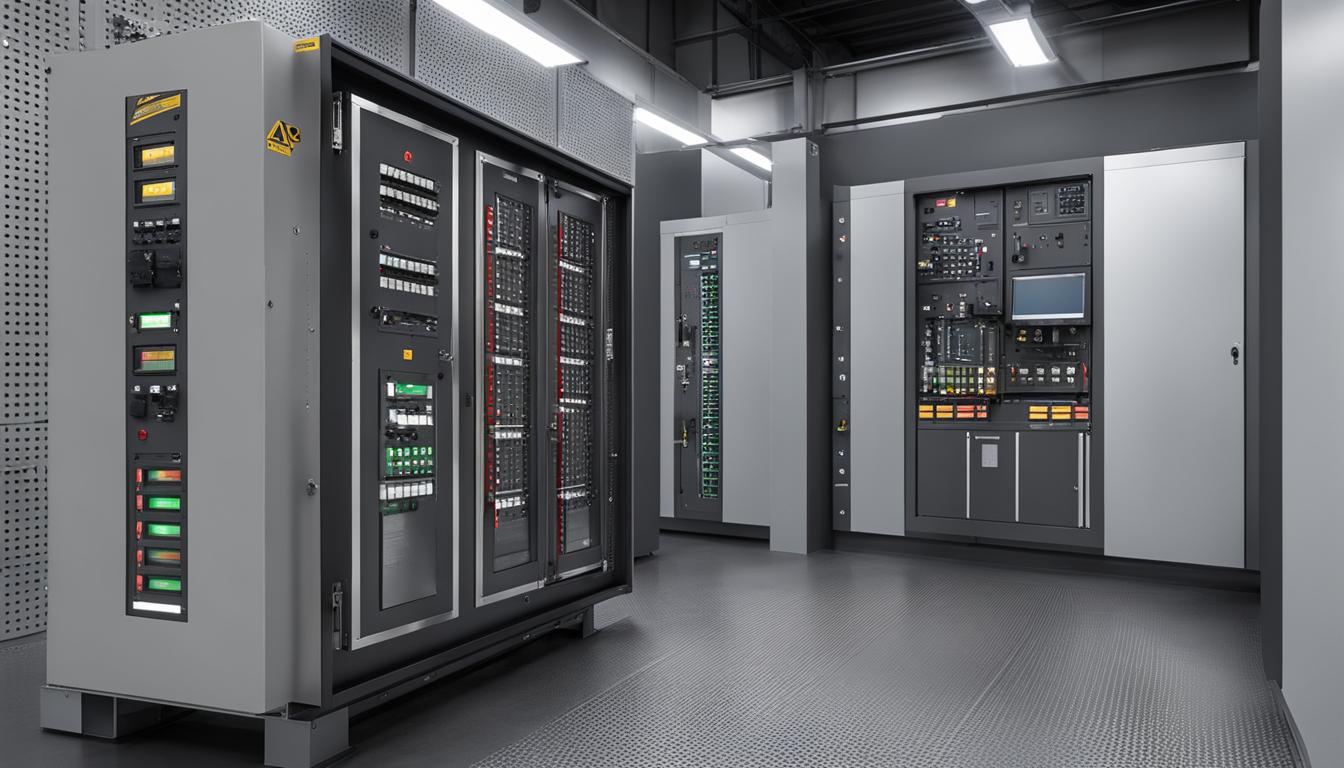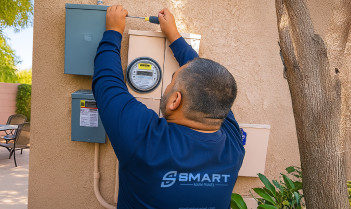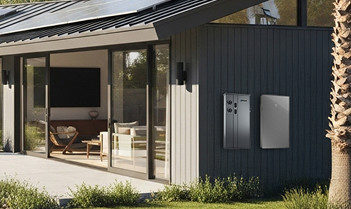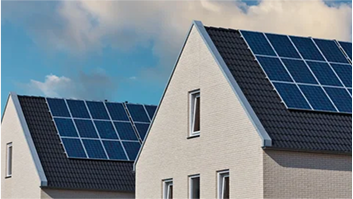
Date
See How Your Home Uses Electricity with Smart Panel Energy Monitoring
Are you curious about how your home uses electricity? With smart panel energy monitoring, you can gain valuable insights into your energy consumption. By tracking and analyzing data from your electrical panel, you can identify your peak energy usage and make informed decisions on how to optimize your energy consumption. This innovative technology allows you to take control of your energy usage and reduce your power bills.
Key Takeaways:
- Smart panel energy monitoring provides real-time data on your energy consumption.
- Understanding your peak energy usage helps you design a more efficient energy strategy.
- Energy-efficient home designs can significantly reduce your peak energy usage.
- Practical steps, such as adjusting habits and upgrading appliances, can help reduce peak energy usage.
- By actively managing your energy usage, you can create a more sustainable and cost-effective living environment.
Understanding Peak Energy Usage
Peak energy usage is an essential concept to grasp when it comes to managing your energy consumption effectively. It refers to the period of time when there is the highest demand for electricity in your home. This typically occurs during specific hours of the day when appliances and devices are being heavily used.
By understanding your peak energy usage, you can design a more efficient energy strategy. It allows you to identify the specific appliances or systems that contribute to your peak energy usage and implement measures to reduce energy consumption during those times. Being aware of your peak energy usage empowers you to make informed decisions on when to schedule high-energy activities or consider energy-efficient alternatives.
With smart panel energy monitoring, you can gain valuable insights into your energy usage patterns and identify when your peak energy usage occurs. By tracking and analyzing data from your electrical panel, you can take proactive steps to optimize your energy consumption and reduce power bills. This innovative technology puts you in control of your energy usage and helps you make data-driven decisions to maximize efficiency.
Key Factors Influencing Peak Energy Usage
Peak energy usage can be influenced by various factors in your home. Some common contributors include:
- Heating and cooling systems
- Large appliances such as refrigerators, washing machines, and dryers
- Electric water heaters
- Home entertainment systems
- Kitchen appliances like ovens, stovetops, and microwaves
By understanding which appliances or systems consume the most energy during peak usage hours, you can make informed decisions to reduce your energy consumption and mitigate the impact on your power bills.
| Appliance | Peak Energy Usage (kWh) | Off-Peak Energy Usage (kWh) |
|---|---|---|
| Air Conditioner | 2.5 | 1.2 |
| Refrigerator | 0.8 | 0.4 |
| Washing Machine | 0.6 | 0.3 |
| Electric Water Heater | 3.2 | 1.5 |
Table: Comparison of peak and off-peak energy usage for selected appliances
Benefits of Smart Panel Energy Monitoring
Smart panel energy monitoring offers several benefits when it comes to managing and reducing your energy usage. With real-time data on your energy consumption, you can make immediate adjustments to reduce energy waste. By identifying your peak energy usage, you can strategically schedule high-energy activities during off-peak hours or consider energy-efficient alternatives. Smart panel energy monitoring also helps you track the effectiveness of energy-saving measures you implement, enabling you to make data-driven decisions to further reduce your energy usage.
One of the key benefits of smart panel energy monitoring is the ability to gain real-time insights into your energy consumption. By monitoring how much electricity you’re using at any given moment, you can identify any areas of high usage and immediately take steps to reduce it. This can include turning off unnecessary appliances or adjusting settings to optimize energy efficiency.
Another advantage of smart panel energy monitoring is the ability to identify your peak energy usage. Peak energy usage refers to the periods of the day when electricity demand is at its highest. By understanding when these peaks occur, you can strategically plan your energy usage to avoid using high-energy appliances during these times. This can help you reduce your overall energy consumption and lower your electricity bills.
| Benefits of Smart Panel Energy Monitoring | Explanation |
|---|---|
| Real-time data | Allows for immediate adjustments to reduce energy waste |
| Peak energy usage identification | Enables strategic planning to avoid using high-energy appliances during peak periods |
| Tracking effectiveness of energy-saving measures | Allows you to make data-driven decisions to further reduce your energy usage |
Implementing smart panel energy monitoring also helps you track the effectiveness of any energy-saving measures you implement. By monitoring the impact of changes you make, such as installing energy-efficient appliances or making improvements to insulation, you can see if these measures are effectively reducing your energy usage. This allows you to make informed decisions on what actions to take to further optimize your energy consumption.
In summary, smart panel energy monitoring offers a range of benefits when it comes to managing and reducing your energy usage. By providing real-time data, identifying peak energy usage, and tracking the effectiveness of energy-saving measures, this technology allows you to take control of your energy consumption and make informed decisions to reduce your energy usage and costs.
Designing an Energy-Efficient Home
When it comes to reducing your peak energy usage and overall energy consumption, designing an energy-efficient home is key. By incorporating smart design choices and energy-saving features, you can create a comfortable living environment while minimizing your energy usage and costs.
Energy-Saving Features
Consider implementing the following energy-saving features:
- High-quality insulation: Proper insulation helps keep your home cool in the summer and warm in the winter, reducing the need for excessive heating or cooling.
- Energy-efficient appliances: Opt for appliances with a high energy efficiency rating. Look for the ENERGY STAR label, which indicates that the appliance meets strict energy efficiency guidelines.
- LED lighting: Replace traditional incandescent bulbs with energy-efficient LED lights. LED bulbs use significantly less energy and last longer.
- Smart thermostats: Install a programmable or smart thermostat that allows you to set temperature schedules and control your heating and cooling remotely. This helps optimize energy usage by adjusting temperatures based on occupancy patterns.
In addition to these features, sealing air leaks and optimizing ventilation systems can further contribute to a more energy-efficient home design. By preventing drafts and ensuring proper airflow, you can maintain a comfortable indoor temperature without relying heavily on heating or cooling systems.
Benefits of an Energy-Efficient Home
A well-designed energy-efficient home not only reduces your energy bills but also contributes to a more sustainable future.
By reducing your peak energy usage, you can lower your electricity bills and make a positive impact on the environment. In addition, an energy-efficient home often provides better indoor air quality and improved comfort levels throughout the year. With thoughtful design choices and energy-saving features, you can enjoy a more cost-effective and sustainable living environment.
Table: Energy-Saving Features Comparison
| Energy-Saving Feature | Benefits |
|---|---|
| High-quality insulation | – Reduces heat transfer and energy loss – Improves indoor comfort – Lower heating and cooling costs |
| Energy-efficient appliances | – Lower energy consumption – Saves money on utility bills – Longer lifespan |
| LED lighting | – Energy-efficient and long-lasting – Reduced electricity usage – Lower maintenance costs |
| Smart thermostats | – Optimize energy usage – Remote control and scheduling capabilities – Lower heating and cooling costs |
By considering these energy-saving features and making well-informed design choices, you can create an energy-efficient home that not only helps you save money but also reduces your impact on the environment. Start incorporating these features into your home design plans today and reap the benefits of an energy-efficient lifestyle.
Tips to Reduce Your Peak Energy Usage
Reducing your peak energy usage not only helps you save on your power bills but also contributes to a more sustainable living environment. By adopting simple yet effective energy-saving practices, you can make a significant impact on reducing your energy consumption during peak hours. Here are some practical tips to help you get started:
1. Be Mindful of Your Energy Consumption Habits
Take a moment to evaluate your daily energy consumption habits. Are there areas where you can make small changes to reduce energy waste? For example, turning off lights when not in use, unplugging electronics that are not being used, and adjusting the thermostat when you’re away from home can all contribute to lower energy usage. Being mindful of your energy habits is the first step towards reducing your peak energy usage.
2. Upgrade to Energy-Efficient Appliances
Consider upgrading your appliances to more energy-efficient models. Look for appliances with an ENERGY STAR® rating, which indicates that they meet strict energy efficiency guidelines. Energy-efficient appliances consume less electricity, reducing your overall energy usage during peak hours. Investing in energy-efficient appliances not only saves you money in the long run but also reduces your carbon footprint.
3. Implement Time-of-Use Pricing Plan
Check with your utility provider if they offer a time-of-use pricing plan. With this type of pricing plan, electricity rates vary depending on the time of day. Typically, off-peak hours have lower rates, while peak hours have higher rates. By shifting high-energy activities, such as laundry or running the dishwasher, to off-peak hours, you can take advantage of lower electricity rates and reduce your peak energy usage.
Implementing these tips can help you reduce your peak energy usage and create a more energy-efficient home. By making conscious choices and adopting energy-saving practices, you can play a part in conserving energy and protecting the environment.
| Tips to Reduce Peak Energy Usage | Impact |
|---|---|
| Be mindful of your energy consumption habits | Reduces unnecessary energy waste |
| Upgrade to energy-efficient appliances | Reduces overall energy usage during peak hours |
| Implement time-of-use pricing plan | Take advantage of lower electricity rates during off-peak hours |
Take Control of Your Energy Usage Today
With smart panel energy monitoring and a proactive approach to managing your energy usage, you can take control of your energy consumption. By understanding your peak energy usage and implementing energy-saving measures, you can optimize the efficiency of your home and save on your power bills.
Smart panel energy monitoring provides real-time data on your energy consumption, allowing you to make immediate adjustments to reduce energy waste. By identifying your peak energy usage, you can strategically schedule high-energy activities during off-peak hours or consider energy-efficient alternatives. This level of control empowers you to make informed decisions based on real-time data, leading to a more sustainable and cost-effective living environment.
By actively managing your energy usage, you can have a significant impact on reducing your peak energy usage. Be mindful of your energy consumption habits and consider making small changes such as turning off lights when not in use or adjusting the thermostat when you’re away. Utilize energy-saving settings on appliances and consider upgrading to more energy-efficient models. Additionally, implementing a time-of-use pricing plan can incentivize you to shift high-energy activities to off-peak hours, further reducing your energy usage.
Start monitoring and optimizing your energy usage today to create a more sustainable and cost-effective living environment. By taking control of your energy consumption, you can not only save on your power bills but also contribute to a greener future. Empower yourself with smart panel energy monitoring and make a positive impact on your energy usage and the environment.
FAQ
What is smart panel energy monitoring?
Smart panel energy monitoring is a technology that allows you to track and analyze data from your electrical panel, providing valuable insights into your electricity usage.
Why is understanding peak energy usage important?
Understanding peak energy usage helps you design a more efficient energy strategy by identifying the specific appliances or systems that contribute to high energy consumption during certain hours of the day.
What are the benefits of smart panel energy monitoring?
Smart panel energy monitoring provides real-time data on your energy consumption, enables immediate adjustments to reduce waste, helps track the effectiveness of energy-saving measures, and allows for data-driven decisions to further reduce energy usage.
How can I design an energy-efficient home?
Incorporating features such as insulation, energy-efficient appliances, LED lighting, smart thermostats, proper sealing of air leaks, and optimizing ventilation systems can significantly reduce overall energy consumption.
What practical steps can I take to reduce peak energy usage?
Being mindful of energy consumption habits, making small changes like turning off lights when not in use, adjusting the thermostat when away, using energy-saving settings on appliances, upgrading to energy-efficient models, and implementing time-of-use pricing plans can all help reduce peak energy usage.
How can I take control of my energy usage?
By utilizing smart panel energy monitoring, understanding peak energy usage, implementing energy-saving measures, and making informed decisions based on real-time data, you can take control of your energy consumption and create a more sustainable and cost-effective living environment.


